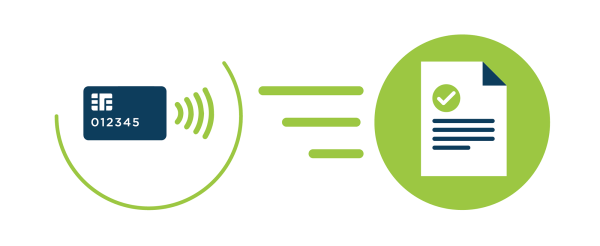Frequently Asked Questions (FAQ)
1. What has EMVCo published?
Specification Bulletin 245[1] to require that all EMV® compliant contactless terminals can decode IQ modulation.
2. What is IQ modulation?
Modulation refers to the process of transmitting data via a carrier signal between two objects – in this case, a payment card or device and the payment terminal.
Currently, EMV payment acceptance terminals are required to generate the communication field on which the card or payment device would respond, which they are expected to do in a basic form known as amplitude modulation.
In reality, the signal received by the payment acceptance terminal from the payment device often contains a mixture of in-phase (I) and quadrature (Q) components, i.e. IQ modulation. This is due to the increasing variety of payment devices, which may generate a more complex response than a passive plastic chip card.
3. Why is EMVCo introducing this?
EMVCo has been working with the payment community to support payment device innovation and new use cases. Chip card manufacturers that participate in the EMVCo Subscriber programme highlighted limitations with the current amplitude-based modulation reception and its ability to support payment device advancements and devices beyond basic plastic payment cards.
If data fails to be successfully communicated between the payment device and acceptance terminal, a transaction would not be authorised. This presents a potential interoperability issue.
There was also a request from public transport operators to better support turnstile throughput capabilities.
4. What are the benefits for the wider payment community?
IQ demodulation ensures long-term interoperability between the payment terminal and a range of payment devices.
Using this demodulation technique improves the communication between the payment device, such as card, watch, smartphone, and the payment terminal by:
- Providing more reliable data transmission improving transaction speed.
- Offering greater flexibility in where the card/device can be positioned to be read by the payment terminal.
Mass transit is one sector set to benefit from the changes with faster turnstile throughput due to improved transaction speeds, and more flexibility in where the payment card/device is positioned to authorise entry into the transport network.
5. Who is impacted by this change?
Payment acceptance terminal manufacturers need to ensure alignment to the new specification bulletin to achieve EMVCo terminal certification.
Payment card and device manufacturers are not directly impacted by this change. There is no change to the requirement that cards and devices shall communicate by generating amplitude modulation.
6. How has the wider payment community been involved in this development?
EMVCo has connected with the payment community in four key areas:
1. Ongoing extensive engagement with the EMVCo Associates and Subscribers community through Special Interest Meetings and technical sessions on the topic.
2. Input from ICC device manufacturers, and the terminal vendors to align capabilities.
3. Test tool vendors to ensure a smooth integration and an assurance of terminal performance when live.
7. Is IQ modulation a requirement of the EMVCo terminal testing process?
Yes. Details to follow shortly, but all terminals undergoing the EMVCo testing process will be required to decode IQ modulation.
8. ISO is also standardising IQ modulation. What is the difference between EMVCo’s and ISO’s work?
ISO creates standards that are far reaching and applicable to a number of industries. Its work ensures synergies that avoid global conflicts.
EMVCo is focused exclusively on the payment community. It works to develop specifications consistent with ISO standards, extracting the elements needed to ensure interoperable functionality within a payment context.
This avoids redundant features being included and offers clear guidance to those creating technology that enable EMV transactions to take place.
EMV® is a registered trademark in the U.S. and other countries and an unregistered trademark elsewhere. The EMV trademark is owned by EMVCo, LLC.
[1] EMVCo publishes Specification Bulletins as and when required to detail and confirm changes to the EMV Specifications. Over time, once a number of updates have been made, an editorial update is undertaken to include the bulletins into the larger specification document. SB 245 forms part of the EMV Level 1 Specifications for Payment Systems, EMV Contactless Interface Specification, and has now been integrated into Version 3.1 – December 2020 of this Specification.



